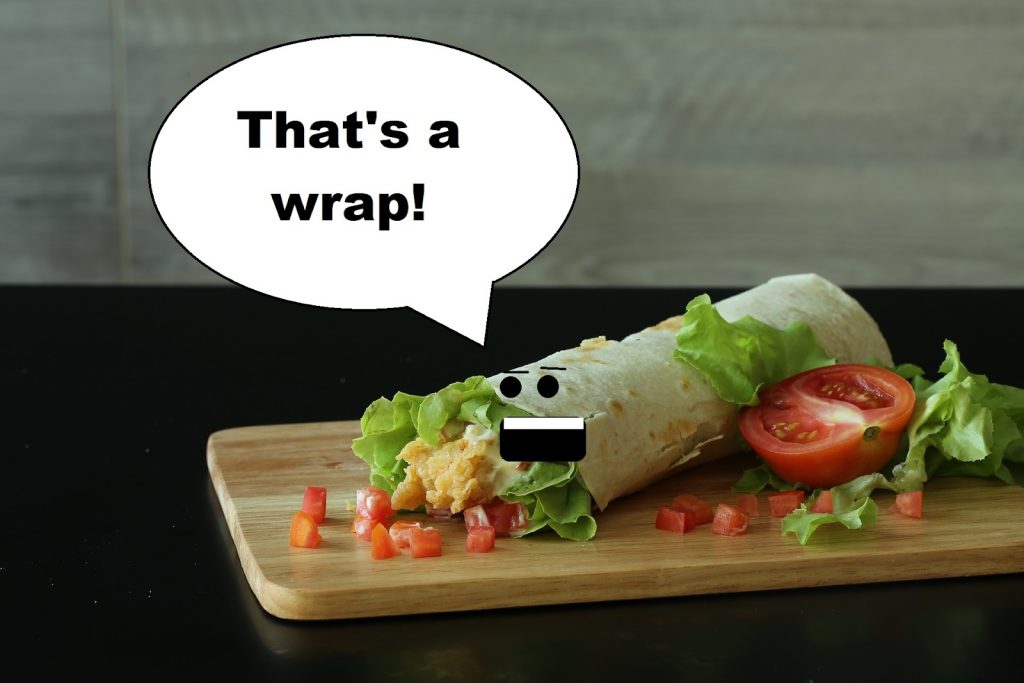Your professor just assigned you another student’s essay to peer review, but maybe you don’t know where to start.
That’s okay! Let’s start by taking some of the mystery out of the equation.
A peer review, also referred to as peer editing or a peer workshop, is when you read another student’s essay draft and make comments on what’s both working well in the paper and what may need improvement. There are different methods by which each college professor might conduct a peer review, but they all adhere to similar guidelines.
This type of assignment may be new to you, and it may seem challenging. But try to see it as an opportunity to…
- Better understand the essay assignment (which you’ll be writing yourself and turning in to your professor)
- See how one of your peers has approached the essay
- Approach editing from a whole new angle
What’s great about peer reviews is that they allow you to be more objective—sometimes it’s easier for us to find things to fix in others’ work.
Practicing with your peers’ papers will help you develop skills that can be used to revise your own writing, which will in turn help you write stronger papers throughout your college career.
So without further ado, let’s break down the top six items you’ll want to focus on in order to write a stellar peer review.
1. Understanding the Essay Assignment
This one may seem like a no-brainer, but it’s super important not to read your peer’s essay draft without fully understanding the assignment yourself.
In fact, by the time you’re ready to write a peer review, you should have already started on the same essay project and have a pretty solid understanding of what your teacher is looking for in a successful paper.
This includes understanding the goals of your essay assignment. What kind of essay is it, and what is the purpose? What should the writer try to accomplish in this essay, or what is the writer trying to make the reader understand?
Below are some examples of common college essay formats, and you can find examples of them all in the Kibin essay example database:
The second part of understanding the assignment includes any guidelines your teacher has specifically defined for the essay. Note whether your classmate is meeting all of these requirements as you read the paper you’re reviewing.
2. Following Instructions
Peer reviews can occur in different formats, and your teacher may have different expectations than someone else’s. So make sure you know what your teacher expects from you before diving into this assignment.
Sometimes you’ll be given a checklist or assignment sheet that you’re expected to follow, or you may find this information in your course textbook or workbook. If not, it’s a good idea to ask for clarification if any part of the expectations are confusing.
You may also be expected to take a copy of your classmate’s essay home for in-depth review, in which case you should plan to spend a quality amount of time on it on your own.
Or you may have a peer workshop in which you’ll be expected to read the essay, take notes, and come to class prepared to give your input aloud to your classmate while the teacher oversees the review session.
In many cases, peer review will require both of the above, so be prepared to spend time reviewing that essay either way!
If you don’t have a strict set of guidelines but want to follow a proven method for peer reviewing, try this handy worksheet that uses the CARES method.
3. Getting Started: Read It All
You might be tempted to get out your red pen and start making comments and suggestions right away, but let’s slow down a bit.
First things first: you need to read your classmate’s essay in its entirety.
It’s important to fully read the essay draft because providing feedback right away can make you less objective and thus a less effective reviewer.
But when you read the entire essay, you familiarize yourself with your classmate’s writing style and get an idea of the points your classmate’s trying to make in the paper.
During this full reading, focus on what your classmate is trying to say, whether the writing is clear and easy to understand, and whether it follows the overall guidelines of the assignment.
For instance, here are the questions you should think about for three types of essays:
- Narrative essay: Does it tell a story?
- Compare and contrast essay: Does it effectively compare one item to another?
- Argument essay: Does it have a clear thesis and support that thesis throughout the essay?
You’ll also want to think about whether the essay follows a coherent structure from beginning to end.
- Are the introduction, body, and closing paragraph(s) clearly defined and separate?
- Do the ideas flow naturally from one point to the next?
- Is anything left underdeveloped or unexplained that would improve your understanding of what the writer is trying to say?
4. Doing a Rough Review
Just like you would write a rough draft of any college-level essay, you should also do a “rough” version of your peer review that focuses on clarity and whether the writer is meeting the assignment goals.
This step includes rereading the essay and—as you go along—highlighting or underlining sections that are unclear or underdeveloped. Add notes in the margins for each mark you make so that you’ll have a handy guide for when you type up your feedback.
This is also a good time to practice your grammar skills. If you see any grammatical mistakes or spelling errors as you read through the paper, be sure to circle these.
Are there any awkward phrases, sentence fragments, punctuation errors, run-ons, or incomplete ideas? Circle these as well, and jot down the reason you’re marking these sections.
But there’s more to it than grammar. Make sure you also focus on these areas:
- Start with the first paragraph. Is there a solid hook? When you finish reading it, do you want to read more? Why or why not? Write down your reason.
- Can you easily identify the thesis—the point that the writer is trying to make/argue? Is there anything that makes the thesis unclear? Why?
- How well is the thesis/main point supported in each body paragraph? If it’s an argument essay, what kind of support is provided? Does the writer use quotes from scholarly sources? Do the quotes adequately back up what the writer is saying?
- Are there any points where the author seems to lose focus and goes off on a tangent? Is there anything that doesn’t seem to fit with the essay or support the main point? Where does this happen, specifically, and what do you find difficult about it?
5. Crafting a Formal Response
As part of the peer editing and review process, your professor may expect you to fill out a worksheet or type up a formal response to turn in for a grade or to give to your classmate.
Either way, you’ll want to make sure that your feedback is clear and easy to understand so that your classmate gets the most out of your peer review.
Below are some tips for providing great feedback.
Be detailed
The least helpful thing you can say is “Good job!” or “This paper was good but needs work.” Instead, what you want to do is tell the writer specifically what is unclear or not working for you.
Here are some key phrases you can use to be more specific in your review:
- “I’m not sure that this example supports your thesis because…”
- “It is a little unclear what you’re trying to say here because…”
- “This paragraph seems to go off-topic from your main point because…”
The examples use the word “because,” but this doesn’t mean you have to write your own comments like this. “Because” is there just to remind you that, for each comment you make, you need to tell the writer why you feel the way you do about a specific part of the essay.
As a rule, any time you make a comment on a classmate’s paper—even positive ones—be sure to reinforce that comment with supporting reasoning.
A side benefit to doing this is that it also gives you practice for when you have to write your own college papers that require support and evidence to back up your idea.
See things differently
Personal bias can get in the way of a good review process, so do your best to set aside your own opinions about the writer’s topic before making your comments.
Try to see things from the writer’s point of view, and consider whether the writer makes a strong case for the ideas, even if you ultimately disagree with them.
Especially in the case of an argument paper, you can disagree with someone’s viewpoint while still acknowledging that the essay makes good points and provides solid evidence that supports the main ideas.
If you’re reviewing this type of essay, focus on whether the support is strong. Then raise questions you might have about the argument that the writer may not have considered. By provoking further thought, you can help the writer revise for a stronger argument.
Edit your work (always)
Part of making sure that the writer understands your comments includes writing clearly yourself. Your responses to the writer’s work should be well-organized and follow the normal paragraph structure of 3-5 sentences.
Start with a topic sentence, and follow it with supporting sentences in the paragraph body that stay on-topic.
Avoid rambling, and correct any run-ons, fragments, and other grammar/style errors. It’s okay for your rough draft to have mistakes, but what you turn in to the writer/professor needs to be proofread thoroughly—their understanding (and your grade) depend on it.
You can edit by yourself, but two heads are better than one. Ask a friend for help, visit your campus writing lab, or have the experts at Kibin edit your work.
6. Staying Positive and Giving Constructive Criticism
A lot of peer editing and review involves looking for ways the writer can improve the essay you’re reviewing. But you don’t want to overload the writer with just critical feedback. A little encouragement goes a long way, so it’s a good idea to balance the negative with the positive.
Peer reviewing is usually pretty new to everyone taking a college-level writing course for the first time. So most students are pretty nervous—on both sides—about how to both give and receive criticism.
The writer is probably worried about negative feedback, and the reviewers are probably worried about giving criticism for fear that the writer will roast them when it comes time for their own peer review.
But not to worry!
If you approach this assignment with the idea that it is meant to help the writer, then you’re already well on your way to writing a fair and positive review. So how do you provide the balance and stay constructive?
Start positive
Find one good thing to say about the beginning paragraph so that you begin by encouraging the writer. Maybe the thesis is strong and clear. Perhaps the sentences are detail-oriented and easy to follow.
Either way, finding one thing that works in the beginning will help the writer feel encouraged when you have to give more critical feedback.
Make suggestions, not demands
Remember that this is the writer’s work, not your own. You don’t want to tell the writer how to rewrite the paper—that’s not your job as a peer reviewer.
If there are any areas that could be improved, suggest changes that you think would work well, but don’t tell the writer, “You have to make these changes.”
It’s much easier for writers to accept (and benefit from) criticism if it isn’t being forced on them.
Try the sandwich method
This review style is based on encouragement and gets results. The sandwich method has three stages:
- Tell the writer one of the strengths in a specific part of the essay.
- Then identify an area that needs improvement.
- Next, reiterate the positive point, and tell the writer what positive results can be achieved if the section you mention is improved.
For more on the sandwich method and other useful criticism tips, check out this LinkedIn post.
Peer Editing: The Takeaway
Let’s do a quick recap of what you need to do to write a successful peer review:
- Understand the essay assignment.
- Be aware of the peer review instructions and your teacher’s expectations.
- Read the essay from start to finish.
- Mark areas on the essay that need improvement and those that are strong.
- Type up your formal response to the writer.
- Be detailed in your response.
- Try to see things from the writer’s point of view.
- Be positive and apply constructive criticism.
You have the CARES example from above, and there’s a good chance your teacher or course workbook has provided a checklist. But if you need another peer review checklist that covers all the bases, try this one—it’s super-helpful and has everything covered in this post.
The checklist is best reserved for the end of your peer editing and review process. It will help you cover anything you may have missed, but it’s best not to rely on it when you’re first diving in.
Instead, take in the whole essay first, and think about it before looking at ways to pick it apart. You’ll have a much stronger review if you put in that initial legwork.
Now you have the necessary tools to get started on your first peer review. Just like any college assignment, this one can be challenging. But if you put in the time and effort and ask questions when you’re confused or get stuck, you should do just fine.
Kibin’s awesome team of editors always has your back too! We’ll be there for you whenever you need help with your writing.





